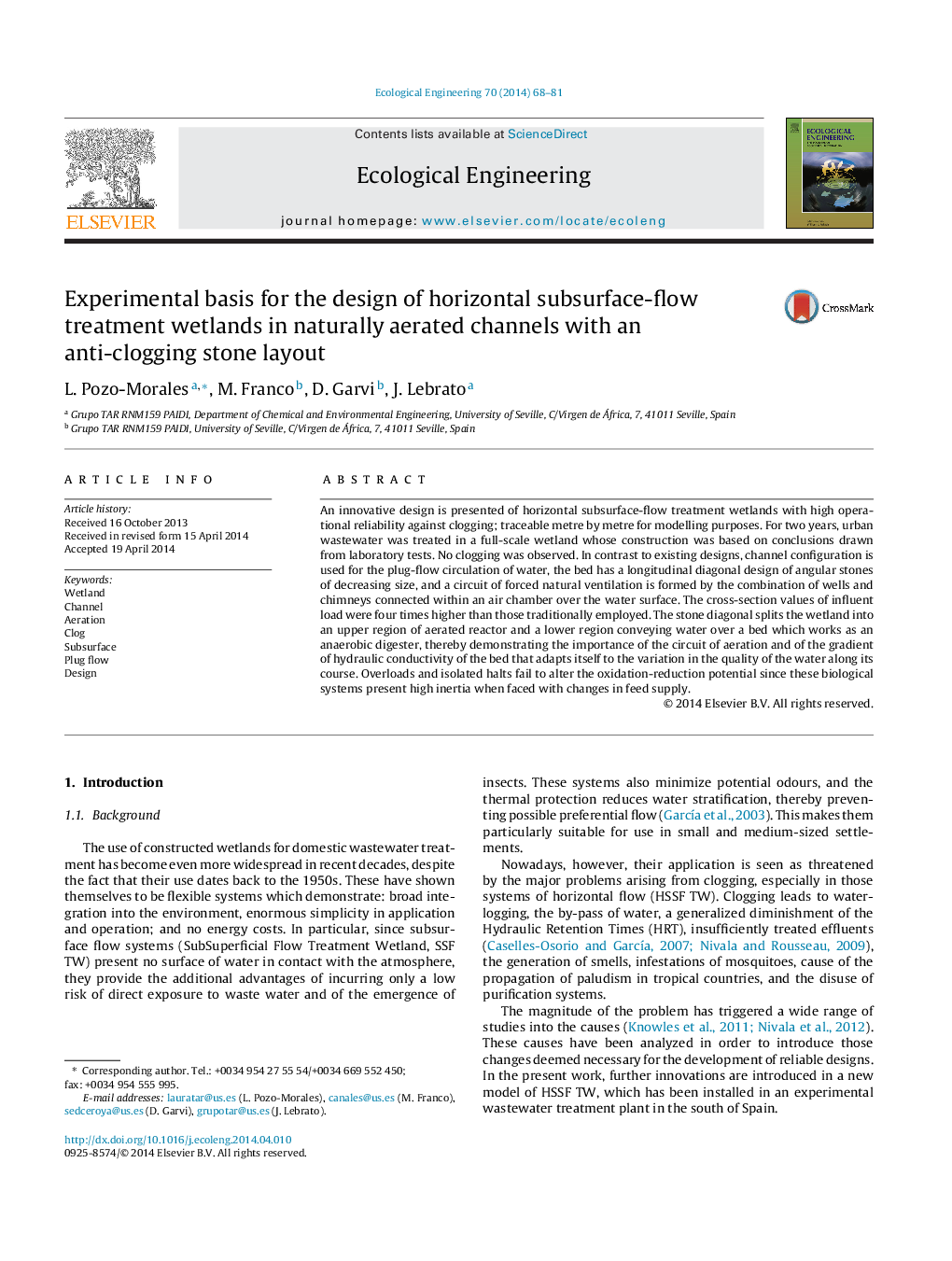| Article ID | Journal | Published Year | Pages | File Type |
|---|---|---|---|---|
| 6302105 | Ecological Engineering | 2014 | 14 Pages |
Abstract
An innovative design is presented of horizontal subsurface-flow treatment wetlands with high operational reliability against clogging; traceable metre by metre for modelling purposes. For two years, urban wastewater was treated in a full-scale wetland whose construction was based on conclusions drawn from laboratory tests. No clogging was observed. In contrast to existing designs, channel configuration is used for the plug-flow circulation of water, the bed has a longitudinal diagonal design of angular stones of decreasing size, and a circuit of forced natural ventilation is formed by the combination of wells and chimneys connected within an air chamber over the water surface. The cross-section values of influent load were four times higher than those traditionally employed. The stone diagonal splits the wetland into an upper region of aerated reactor and a lower region conveying water over a bed which works as an anaerobic digester, thereby demonstrating the importance of the circuit of aeration and of the gradient of hydraulic conductivity of the bed that adapts itself to the variation in the quality of the water along its course. Overloads and isolated halts fail to alter the oxidation-reduction potential since these biological systems present high inertia when faced with changes in feed supply.
Related Topics
Life Sciences
Agricultural and Biological Sciences
Ecology, Evolution, Behavior and Systematics
Authors
L. Pozo-Morales, M. Franco, D. Garvi, J. Lebrato,
